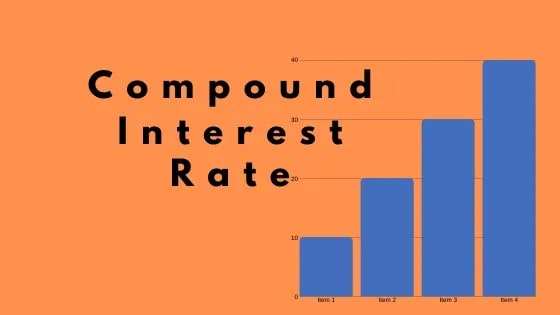

What is Interest Rate, and How Is It Calculated?
Ray Dalio, billionaire investor, hedge fund manager and philanthropist
The interest rate was introduced as a tool that allows you to get paid for submitting your funds for other parties' usage. Interest rates were invented in Ancient Greece and sometimes were represented as natural goods, not money. For example, those who took grain had to return more grain.
In any case, the interest rate was assumed to be something negative throughout the years, so banks and lending organisations, as we know them now, became widespread and completely legal in the recent past. Today, taking out a loan is quite easy, and almost everyone has done it at least once, so it's important to know more about the essence of the interest rate and the different types.
What Is an Interest Rate?
The interest rate can be called payment for receiving a loan. When you take out a loan, you need to return the total loan amount, plus the interest rate, which is derived from the amount owed. For example, if you take a $100 loan at a 7% interest rate, you need to return the $100 principal and $7 in interest.
When Are Interest Rates Applied?
The interest rate is applied when you lend assets, fiat, crypto, etc. Whether you're an individual or a legal entity, the interest rate can be applied when you borrow funds. It can rise or decrease depending on the loan terms.

How Is an Interest Rate Calculated?
There are different types of interest rates, and thus each type is calculated differently. Regardless of the interest rate amount, it can always be represented in an equation. We'll disclose below how to calculate simple and compound interest rates.
How to Calculate a Simple Interest Rate
A simple interest rate is a basic type. It considers that you need to repay a principal plus interest only. For example, when you take out a $100 loan, with a simple interest rate of 5% applied, you need to repay a total of $105.
However, when you take out a loan, there's a specified term for which the interest rate is applied and payment periods. Usually, it's applied per annum, and the payment period is monthly. Thus, if you take $100 for three years and a simple interest rate of 5% per annum, you have to repay:
$100*(5%*3+100%) = $115
We take $100 as principal, multiply 3 by 5% as there are three years for the loan usage with a 5% interest rate per annum.
Your monthly payment will be:
$115/36= $3.19
We take the whole sum to repay, a total of $115, and divide it by the number of months in 3 years, which equals 36. Thus, you need to pay $3.19 if you take out a loan under the terms described above.
How to Calculate a Compound Interest Rate
Compound interest is much more complicated than simple interest. An applied compound interest rate means that you pay interest on the principal plus interest on the interest for the past time periods. That means that if you take $100 for three years, with a 5% compound interest rate per annum, you'll be charged $5 interest for the first year, $5.25 for the second year, and $5.51 for the third year. The full interest amount will total $15.76, and the whole sum you need to repay will equal $115.76 ($100 of principal plus $15.76 in interest).
The compound interest you need to repay can be calculated using this formula:
| CI=P*(1+IR)^n-P |
CI - compound interest
P - principal
IR - interest rate
When you compare a simple and compound interest rate, it's obvious that the second option is worse for the borrower if the same rate is applied. For example, the difference only equals $0.76 ($15.76-$15.00). However, if you take out a loan for a long period of time, such as 20 years, the difference becomes much more significant.

Which Types of Interest Rates Are There?
In addition to the simple and compound interest rates, there are other types one should know about:
- Fixed
- Variable
- Amortised
- Prime
- Discount
Fixed Interest Rates
A fixed interest rate considers that it won't change no matter how the interest rate changes on the market. For example, if at the moment you take the loan at a 7% interest rate, with an average interest rate on the market of 7%, it remains unchanged no matter what.
Most lenders prefer this type of rate because it allows you to plan your payments precisely. Its main advantage is stability. However, there are issues with it, as well. For example, your interest rate can't be decreased if the interest rate on the market falls. On the other hand, it can't rise if the interest rate on the market rises.
Variable Interest Rates
A variable interest rate means that it can change, and its size depends on the prescribed conditions. For now, in the US, the variable interest rate usually follows the changes in the Cost of Savings Index. The good thing about this type is that it can decrease. However, the bad thing is that it can increase as well, and thus you may have issues with repaying the loan. Generally, it's an antipode of the fixed interest rate.
Amortised Interest Rate
An amortised interest rate is about charging the principal remaining with the interest rate applied. Thus, an amortised interest rate considers that you pay more interest at the beginning of the loan period and less principal. As time passes, you pay less interest and more principal.
Prime Interest Rate
This interest rate is usually applied to large institutions like banks or corporations. It's usually lower than the general interest rate and is only enforced for trustworthy parties.
Discount Interest Rate
A discount interest rate is applied for short-term loans. It's calculated based on risk, the borrower's cash flow and other temporary factors.
Comparison Rate for Decision-Making
When you have alternatives to choose from when taking a loan, your best helper is the comparison rate. It's used to figure out the loan cost deriving the interest and all other costs charged when you take the loan. For example, if the interest is 7%, while the fees and charges applied to this loan make 0.3%, the comparison rate will equal 7.3%. This indicator allows you to clearly understand your true costs for loan repayment.
Thus, when you have several offers to take out a loan from, consider the interest rate and the comparison rate. Let's see an example:
- One bank offers you a loan with an interest rate of 6%. Along with that, you are charged for loan insurance by 0.2% and a service fee of 0.6%.
- Another bank offers you a loan with an interest rate of 6.5%. No additional fees apply.
As you can see, although the first bank offers you a loan for 6%, your comparison rate will be 6.8%. The second bank offers a greater interest rate for the loan. It's still going to be a more profitable solution to take out a loan there as 6.8% is more than 6.5%.
What Is an APR?
APR stands for annual percentage rate. It's a coefficient of the rate charged per annum. The APR is the basic and most widespread indicator used to evaluate the cost of the loan. Considering the APR is vital for decision-making purposes.
What Is the Difference Between an Interest Rate and APR
There's no difference between the interest rate and APR. APR is one of the characteristics of an interest rate and means annual percentage rate. In other words, it's the charge for the loan per annum. The interest rate is a figure that shows the charge for using the loan. Usually, when someone points out the interest rate, the period for which it's applied is also underlined. For example, what we call interest rate can be applied per quarter or monthly. Although an interest rate is usually applied per annum, in most cases, the interest rate equals the APR.
Let's look at another example. You take out a loan with an interest rate of 4% per quarter. If it's a simple interest rate, you can say that the APR for this loan equals 16%, as there are four quarters in a year.
Interest Rates and the Forex Market
Interest rates play a large role in the economics and financial markets, including forex. The interest rate increase usually means that the economy has slowed down, while a decrease in the interest rate usually means that the economy is moving faster.
Depending on the assets and tools forex traders deal with, there can be different effects upon a change of interest rate on the global markets. An inadequate interest rate, no matter whether it's too low or too high, will cause instability and crises in the market, which should be considered by the forex trader when one figures out a strategy.
How Do Interest Rates Affect Currencies?
The higher the interest rate is, the higher the inflation will be. If you compare prices 20 years ago to prices today, the dramatic increase is obvious. That's all tied to inflation, so $10 today and $10 in the 1990s are worth different amounts in real terms.
If the central bank of a specified country has increased an interest rate, this will lead to the growth of inflation of the currency, and in the long or even short term, this factor will cause a falling trend for the specified currency.
Thus, for a trader, it'll be valuable to have practice dealing with this factor. Track the changes in the currency price on the forex after the release of news related to a change in interest rates.
Conclusion
Traders should be aware of interest rates, their types, policies of central banks, etc. Predicting changes in interest rates in a given period can help a trader make better decisions.
Knowledge of interest rates on the mortgage or business loan markets and the peculiarities of this subject will also be helpful. Considering the role interest rates play in the global economy and all of the industries, a trader who ignores this topic will be blind in one eye.
To figure out the strategies for using information about interest rate changes in trading, use the Libertex trading platform. Here you can open a demo account and test various strategies to examine them for efficiency.
Consider registering an account and making demo orders upon receiving a change of interest rate news release. For example, try the EUR/JPY trading pair. Track the changes in interest rates of central banks and news related to this topic, and make orders (long or short) based on these changes. It's likely that, based on monitoring the interest rate, you'll build a trading strategy on the forex market.
Disclaimer: The information in this article is not intended to be and does not constitute investment advice or any other form of advice or recommendation of any sort offered or endorsed by Libertex. Past performance does not guarantee future results.
Why trade with Libertex?
- Get access to a free demo account free of charge.
- Enjoy technical support from an operator 5 days a week, from 9 a.m. to 9 p.m. (Central European Standard Time).
- Use a multiplier of up to 1:30 (for retail clients).
- Operate on a platform for any device: Libertex and MetaTrader.